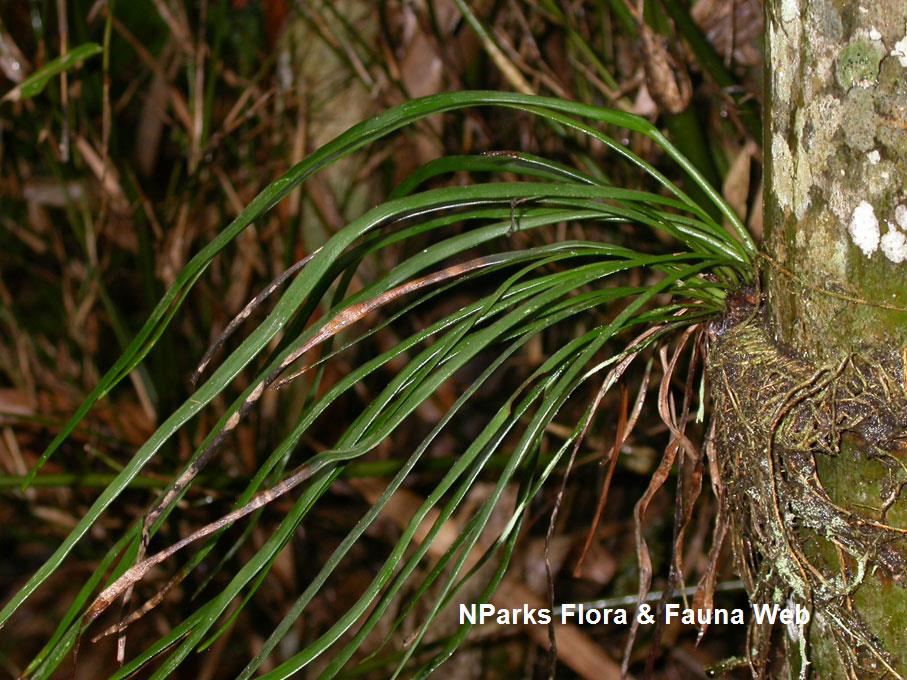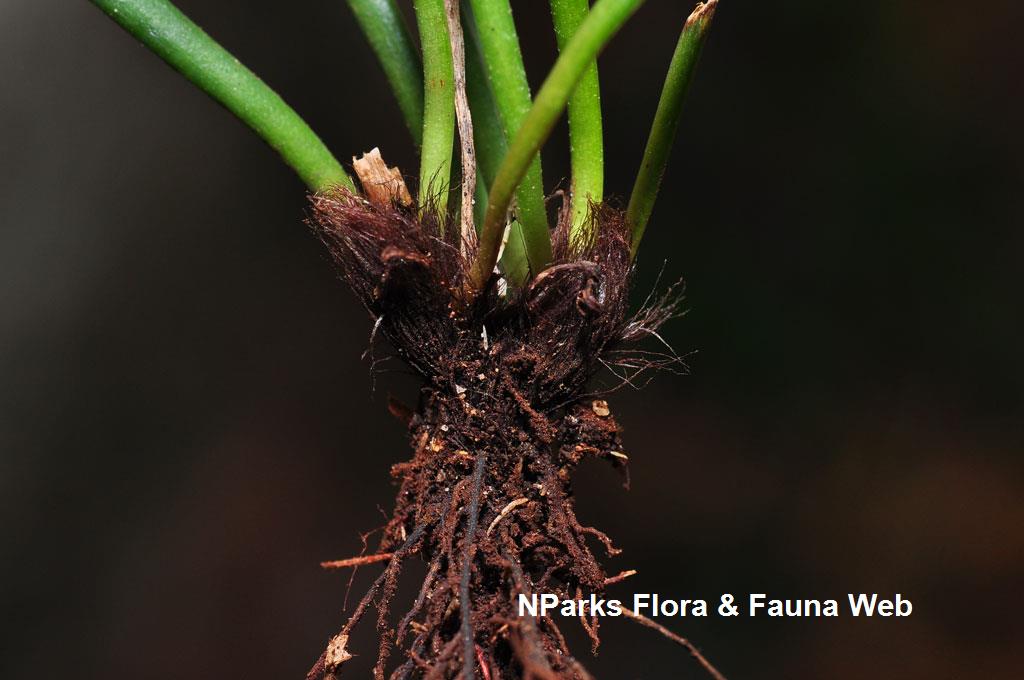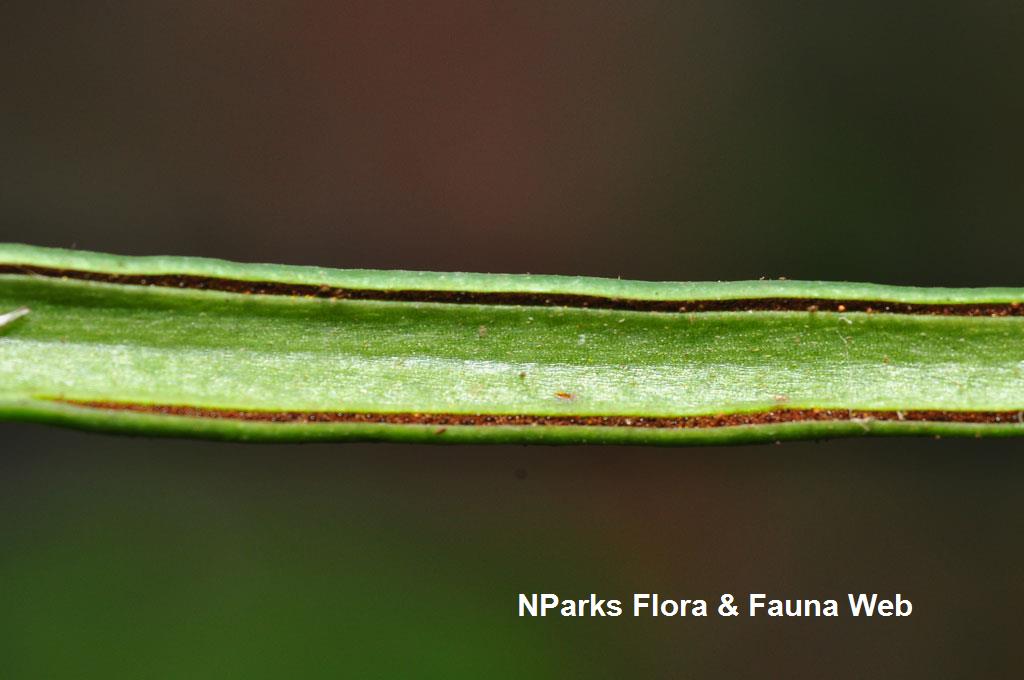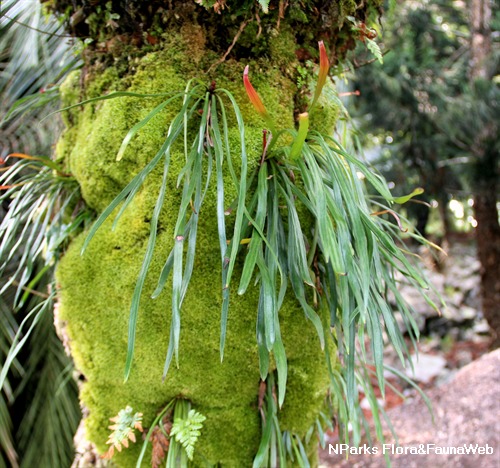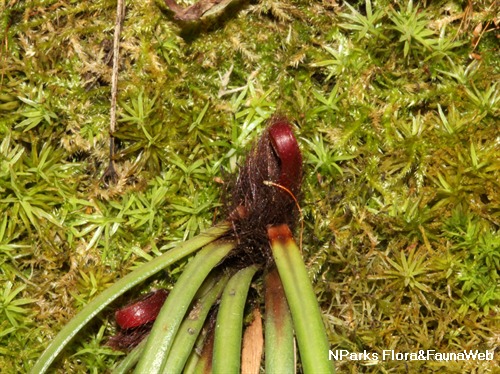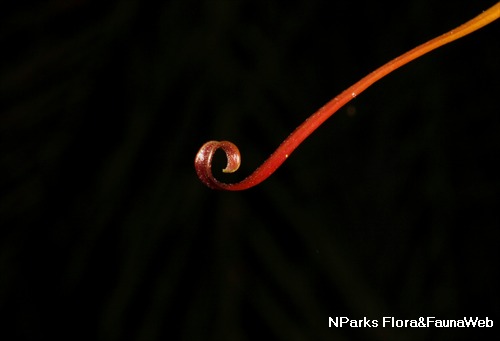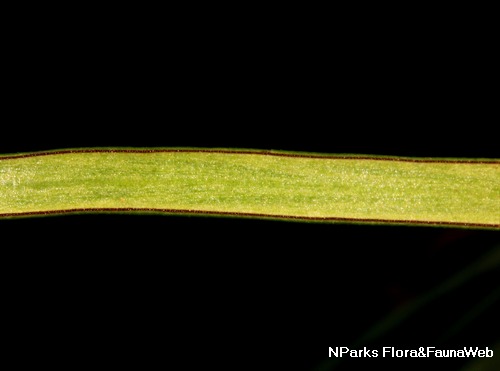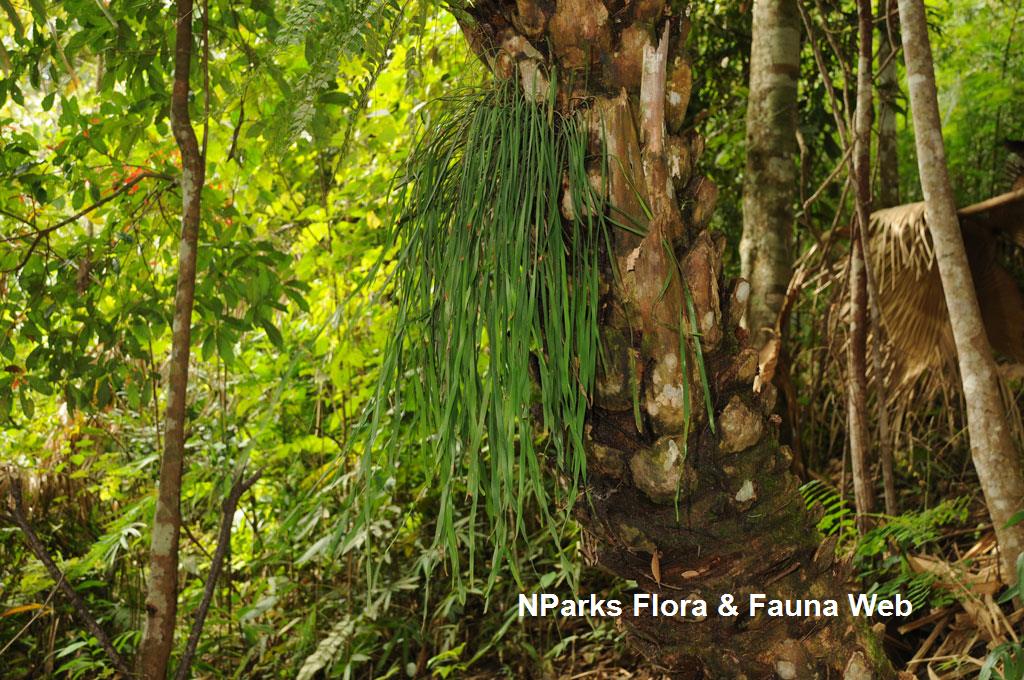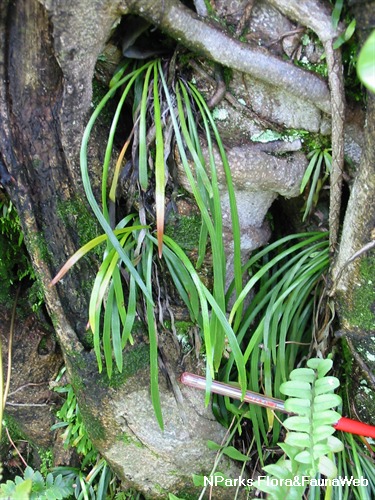
Back
Haplopteris ensiformis (Sw.) E.H.Crane
| Family Name: | Pteridaceae |
| Synonyms: | Vittaria ensiformis Sw., Vittaria lineata auct. non (L.) Sm. <1> |
| Common Name: | Shoestring Fern, 书带蕨 |
Haplopteris ensiformis or Shoestring Fern is an epiphytic fern native to Singapore. The fronds are linear, thick and becomes pendulous as it grows longer. The sori are linear, produced in deep grooves near the margins on both sides of the frond. It also has short-creeping rhizomes and lattice-like scales which are dark brown to black. The newly emerged fronds and croziers tend to be red or pink is a key character used to tell the Haplopteris species apart.
Name
Classifications and Characteristics
| Plant Division | Ferns & Lycophytes (Non-Seed Vascular Plants) (Fern) |
|---|---|
| Plant Growth Form | Herbaceous Plant |
| Lifespan (in Singapore) | Perennial |
| Mode of Nutrition | Autotrophic |
| Plant Shape | Grassy |
| Maximum Height | 35 cm |
Biogeography
| Native Distribution | Tropical East Africa, Mascarene Islands, India, South China, Continental Southeast Asia, Malesia to Australia and the Pacific Islands. |
|---|---|
| Native Habitat | Terrestrial (Primary Rainforest, Secondary Rainforest, Disturbed Area / Open Ground) |
| Preferred Climate Zone | Tropical |
| Local Conservation Status | Native to Singapore (Least Concern (LC)) |
Description and Ethnobotany
| Growth Form | It is a grass-like epiphytic fern with short-creeping and slender rhizomes, sometimes found growing on the surface of rocks. |
|---|---|
| Foliage | Frond is linear, thick, leathery, up to 40 cm long, 2.5 - 6 mm wide, veins and midrib are hardly visible. Croziers and newly emerged fronds are slightly pink or red. The blade tend to roll inwards, functioning as a false indusium to protect the sporangium, a spore-bearing structure. When the plant is young, the shorter fronds are slightly erect. As the fronds grow longer, they become pendulous. |
| Reproductive Parts - non-flowering plant | Sori are linear, in deep grooves near the margins on both sides of the frond. |
| Others - Plant Morphology | The rhizomes are slender, short-creeping, 0.7 - 1.5 mm wide, covered with a mass of roots and scaly throughout. Scales are dark brown to black, linear, lattice-like, gradually narrow to the tip, slight toothed at the margin. |
| Habitat | On tree-trunks usually in dense evergreen forests at low or medium altitudes. <2> |
| Similar | Haplopteris ensiformis and Haplopteris elongata are similar in apperance. The key differences are found in the fronds; Haplopteris ensiformis have very narrow, linear and thick fronds that are reddish to pink when newly emerged. Unlike Haplopteris elongata which have strap-shaped, elliptic to linear fronds that are not as fleshy and remains green throughout. Only the veins and midrib of Haplopteris elongata are visible when held against a light source. |
| Cultivation | It can be propagated by spores. |
| Etymology | Latin ensiformis, sword- or lance-shaped, referring to the long and narrow shape of fern leaves |
Landscaping Features
| Desirable Plant Features | Ornamental Foliage |
|---|
Plant Care and Propagation
| Light Preference | Semi-Shade |
|---|---|
| Water Preference | Moderate Water, Occasional Misting |
| Plant Growth Rate | Fast to Moderate |
| Rootzone Tolerance | Shallow Media |
| Propagation Method | Spore |
Foliar
| Foliage Retention | Evergreen |
|---|---|
| Mature Foliage Colour(s) | Green |
| Mature Foliage Texture(s) | Leathery |
| Foliar Type | Simple / Unifoliate |
| Foliar Shape(s) | Non-Palm Foliage (Linear) |
| Foliar Margin | Entire |
References
| References | <1> Hooker, W.J., et al. (1864). Species Filicum, vol. 5, pp. 180. London: Dulau & Co. <2> Tagawa, M. & Iwatsuki, K. (1985). Flora of Thailand. vol. 3(4), pp. 223-224. Bangkok: The Forest Herbarium, Department of National Parks, Wildlife and Plant Conservation. |
|---|
Image Repository
Others
| Master ID | 284 |
|---|---|
| Species ID | 1580 |
| Flora Disclaimer | The information in this website has been compiled from reliable sources, such as reference works on medicinal plants. It is not a substitute for medical advice or treatment and NParks does not purport to provide any medical advice. Readers should always consult his/her physician before using or consuming a plant for medicinal purposes. |

